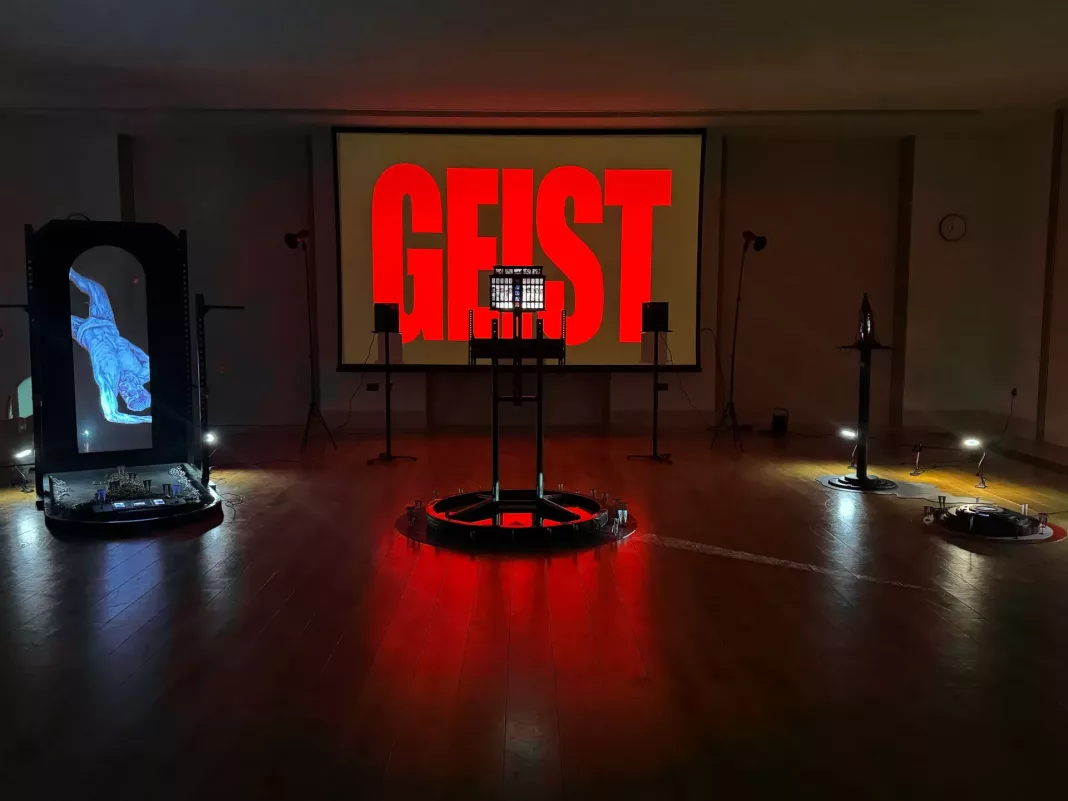Zeitgeist
The general intellectual, moral, and cultural climate of an era
One Sunday afternoon last term, myself and two friends went along to an art exhibition at Trinity College. Upon entering a darkened room, we were immediately struck by an intense, almost bewildering soundscape, and before us were strange, industrial sculptures. This, as it turned out, was merely a first impression.
William Lowry is a recent graduate of The Ruskin School of Art, having also received the Ashmolean Museum’s Vivien Leigh Prize and the Emery Prize from Pembroke College. Lowry is a multidisciplinary artist, and his work “combines drawing, printmaking, sculpture and sound to probe themes of personal and collective memory, masculinity and queer desire, myth and modernity”. In this sense, Zeitgeist was no different.
‘Structure I’, located in the centre of the installation was a Berghain-esque model of a building atop a metal stand which sat in something of a reflecting pool. Within the ‘windows’ of the building were detailed biro sketches of athletic men, with strange faces reminiscent of Goya’s Black paintings. ‘Structure II’, to the left, was the largest. A tall church-style window framed another biro sketch of athletic male physique, a man tumbling upside-down. The athleticism was further suggested by the artist’s use of a weights rack, such as one would find in a gym. On the floor, mirroring the frame, was a gravel track, flanked by chains and topped by miniature propaganda-style pennant flags, again displaying the male physique.
‘Structure III’ occupied the right-hand side of the room, a circular layered piece again surrounded by miniature pennant flags and a picket fence. What intrigued me most, however, were the waves of red light, which isolated the piece in an ominous glow. Behind this was ‘Structure IV’, a crooked church tower atop a stand which itself stood in an oil spill. Here, again, the windows revealed muscles and contorted faces. A lone searchlight, positioned behind the viewer, periodically brought one’s own silhouette into focus on the far wall.
But perhaps the most striking aspect of this installation was the series of images projected onto the back wall, accompanied by a dynamic original soundtrack. Clips of industry, metal fences and light shows were followed by ‘Zeitgeist’ or ‘Jetzt’ (now/nowadays) which were projected in huge letters, but only for a moment. Further images included strips of light, which flashed all manner of colours, and strange, undefinable shapes which were merely tangles of lines. The music was synchronised cleverly with the images, and ranged from calming ambient textures, to industrial techno and dark synthesisers. My friends and I stood watching this succession of images for ages. The audio-visual experience produced a trance-like effect, which was fascinating in its darkness, but also unnerving in its unpredictability. It was genuinely difficult to look away, there was something of an alternate reality about it.
However you may define art (be it through purely aesthetic qualities, the artist’s intention, its purpose etc.) this was an installation that held our attention for far longer than a moment. But in many ways, that was the genius of Lowry’s work. Once in that room, the depth of material and media made it impossible to soon leave.
Alien structures and shapes combined with familiar human musculature to give a strange effect, as did the imagery and intense soundtrack. Whilst each piece could be appreciated as an artistic feat in itself, the strength of this installation lay in their coming together. Only by immersing oneself in the room for an extended period did one truly appreciate this as a consummate multimedia experience. It was intriguing and unsettling in equal measure, and it stayed with us long after we’d left Trinity.
William Lowry has an upcoming solo exhibition at Pembroke College Gallery from 2nd–6th March. See more of his work on Instagram: @williamlowry.art


